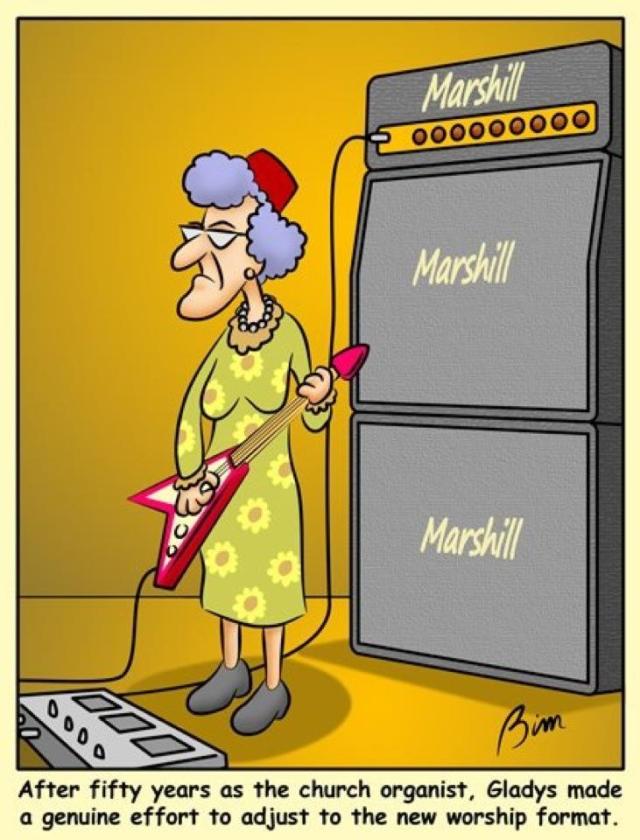One of the thorniest barriers to moving to a contemporary style, I think, is that there are beloved hymns that are going to be sorely missed by long-time members. If you’re moving from a traditional service style to a more contemporary one, this will eventually come up. It may not be a problem to include one in your service, if you have a keyboard player who reads well enough to go by the hymnal.
But if you don’t have one … what do you do when you have to include “Doxology” or it’ll be the End of the World as We Know It? Some guitarists will start to sweat at this point.
A couple of years back, our choir director/pianist got sick, and I got a frantic call from the minister at 3:oo on Saturday afternoon: “Can you play for the traditional services tomorrow?” Of course I said yes, and then I joined in the panic as I looked at the order of service.
But, I was able to get “Doxology”, “Spirit of Life” and “I Walk the Unfrequented Road” into decent shape by the next morning. Since then, I’ve had other occasions to play these and similar hymns and have found that they actually work well on guitar, if they’re arranged properly.
Writing up my method for doing this has been on my to-do list for several months now, but my indolence has been rewarded by the appearance of an instructional video from Gibson Guitars, which covers much the same ground. So, I commend it to you.

There are some differences in method we will have to take into account. First, we can’t “fix” the key to be guitar-friendly. Hymns are pitched so everyone in the congregation can sing them, which means the melodies lie more or less in the range of middle C to e at the top of the treble clef. You may be able to move from the key of F (one flat) to E (four sharps, a royal hassle for pianists but the guitar’s natural key) without anyone noticing much, but look carefully at the vocal range and don’t try to move outside the C-to-e range, or be prepared for pain.
That said, if you’re stuck with uncomfortably high notes (Doxology, for example), be prepared to shift positions, say from playing D at the second fret to the barre form on the tenth fret. One thing that I have found indispensable is to lay out the melody using different chord inversions to get the correct note on the top. Maybe this is so obvious it didn’t bear mention, but it’s what I finally settled on after a bit of trial and error. In a nutshell, if you can play the E, C and A barre chords in any position, you can get the root, third or fifth tone, respectively, on the top string. The other notes of the scale are easy to reach from there. Similarly, look for the Em and Am forms that put you in the right position on the fretboard. Though the open Cm chord isn’t really usable, the four-note Dm (identical to a first-fret Bmaj7) will usually fill in nicely between the Am and Em forms.
And don’t be afraid to fill in single-note runs between chords in the melody, even if you’re playing solo. Piano arrangements do it, so why can’t we guitarists? You might even try just playing the melody as a single-note line, then adding in chords until it sounds full enough.
Hymns arranged this way for guitar are surprisingly effective, especially when accompanying congregational singing. And sometimes (I’m thinking of our arena-rock arrangement of “Wake Now My Senses”) just playing a song the first time on guitar will conjure up a stylistic setting that will keep the melody (so everyone can sing it) while giving it a fresh sound.


